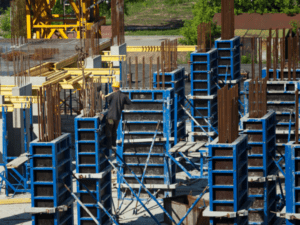Understanding About Formwork In Construction
Formwork is an important part in the construction. Especially in the construction of columns, slabs, beams and core walls in the building project. It is more critical when the project is a hi-rise building, if it’s getting higher and higher as it progresses. And it would perhaps to be dealt with utmost care.
Now, here is the excerpt of the certain requirement from structural specification about formwork. So, you may be able to easily find out and read this article when you want to come back into the specification about formwork including “stripping.”
Formwork shall be of steel or timber providing it is constructed so as to be rigid during casting of the concrete and sufficiently water tight to prevent loss of the liquid from the concrete and it shall be adequately propped and braced in their correct position and shall be sufficiently strong to resist distortion by the pressure of the wet concrete constructional loads, wind and other forces.
The deflection shall not exceed 3mm. Bottoms of beam boxes shall be erected with an upward camber of 10mm for each 5.0 meters of span. If so instructed the designs for shuttering shall be submitted to the Engineer for review before construction.
Shuttering shall be provided for the top faces of sloping work, and anchored to prevent floatation, where the slope exceeds more than 15 degrees fromhorizontal. The inside faces of all forms shall be treated wild mould oil oftype approved by the Engineer and the Contractor shall promptly removed any mould oil, which sticks onto reinforcement or other embedded fittings.
Before any concrete is placed, all shavings, dirt and rubbish shall be removed from the formwork and whenever required by the Engineer, this shall be done with compressed air. Formwork shall be also wetted with water immediately before concreting.
Forms are to conform to the shapes, lines, grades and dimensions of the concrete shown on the drawings and to the Engineer’s approval. Suitable temporary openings shall be left in all formwork to facilitate cleaning out of the works before placing of concrete. In deep sections provision is to be made for placing concrete in such a manner that shall have to drop more than 1.25m.
Where concrete is to be poured in successive lifts care shall be taken to ensure that the formwork is set tightly against the concrete of the proceeding lift to prevent the formation of lips and loss of grout or liquid between the formwork and concrete.
On exposed concrete faces, no method of fixing the forms shall be used, which involves any kind of fixing in the concrete or any patching of the concrete face.
No concrete shall be placed anywhere until the Engineer has inspected and approved the formwork and reinforcement and the Contractor shall give him reasonable notice to enable this to be done. In all cases, the Contractor shall give a minimum of 24-hour notice for inspection, but not later than 2:00pm each day. Contractor shall, on a daily basis, provide Engineer a schedule of concrete pour for the following day.
The contractor shall be responsible for properly supporting all concrete until it is sufficiently strong for the formwork and props to be removed. No formwork shall be removed without the Engineer’s prior approval and in no case shall any shuttering be removed the following times have elapsed after placing the concrete.
| Shuttering | Stripping time |
|---|---|
| Beam Sides, walls and columns | 24 hours |
| Walls and Columns of concrete 60 Mpa or more strength | 2 days |
| Slabs (props left under) | 4 days |
| Slab (removal of props) | 7 days |
| Beam Soffits (props left under) | 7 days |
| Beam Soffits (removal of props) | 21 days |
If you enjoyed reading about the structural specification of formwork. You may share it with your favorite social network and you can comment your thoughts on the comment box below.
Thanks!


Comments
Post a Comment